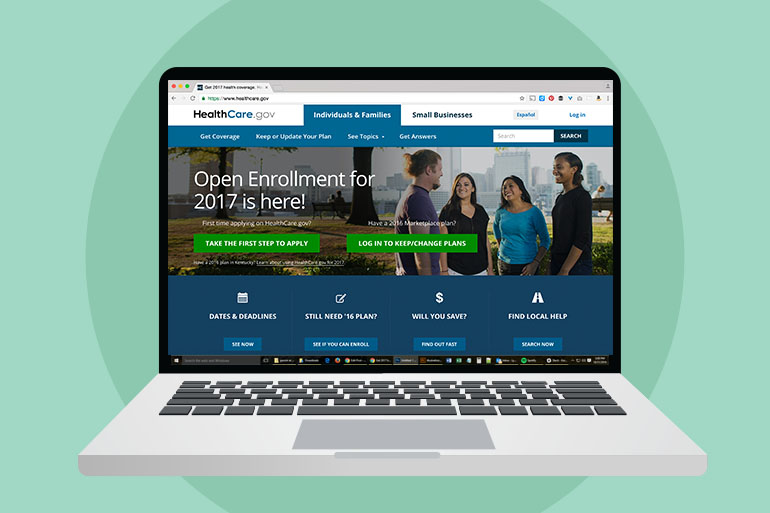An estimated 12.2 million people signed up for health insurance through the Affordable Care Act for 2017, federal officials reported Wednesday, down slightly from the 12.7 million who signed up for 2016.
It was also fewer than the 13.8 million people the Obama administration predicted would sign up last fall.
But supporters of the law argue that final enrollment was held down by Republicans when they took over the White House in January. They also maintain that the law is not in danger of collapse, as both President Donald Trump and GOP leaders in Congress claim.
The administration had no immediate comment on the enrollment numbers.
“I think the discrepancy from last year is almost entirely explained by the lack of a final push in marketing and outreach and promotion,” said Topher Spiro, vice president for health policy at the liberal-leaning Center for American Progress. “We were on track to exceed enrollment,” he said, referring to a late rush to sign up in December for coverage that began Jan. 1.
However, the Trump administration, which took over just 10 days before the end of the three-month enrollment period for the health law, immediately canceled the final round of most ads encouraging people to sign up. In each of the health law’s previous enrollment periods, a huge rush came at the end, particularly among the younger, healthier adults whom insurers covet. That did not happen this year.
Still, enrollment among those ages 18 to 34 held basically steady, at 27 percent, down from 2016’s 28 percent.
Despite that, enrollment remained strong in states that were already doing well under the program, including California, which signed up more than 1.5 million people for coverage. Even Arizona, which had some of the largest premium increases in the nation, saw enrollment drop only slightly, from 203,000 in 2016 to 196,000 this year.
As in previous years, the vast majority of those who signed up on the health exchanges — 83 percent — had incomes low enough to qualify for tax credits to help them pay their premiums. More than half — 58 percent — got additional subsidies to help cover deductibles and other out-of-pocket costs.
Even before the numbers were released, the Congressional Budget Office, in its report on the Republican replacement for the bill, found that the individual market “would probably be stable in most areas under either current law or the [GOP] legislation.”
Spiro said he agrees with that but worries that the continual dire predictions being made by Trump and Republican leaders could become “a self-fulfilling prophecy” by creating so much uncertainty for both insurance companies and consumers.
“You have to ask how many more would have enrolled if there weren’t this cloud hanging over the law and if the president was not saying that the markets are imploding or collapsing. If you’re a consumer, that does not sound like something you want to be a part of,” he said.
This story was produced by Kaiser Health News, an editorially independent program of the Kaiser Family Foundation.


